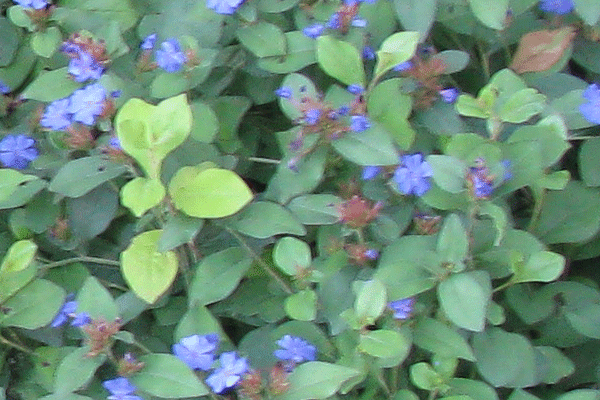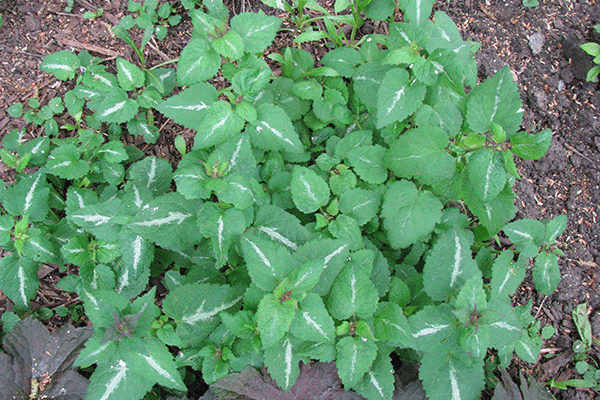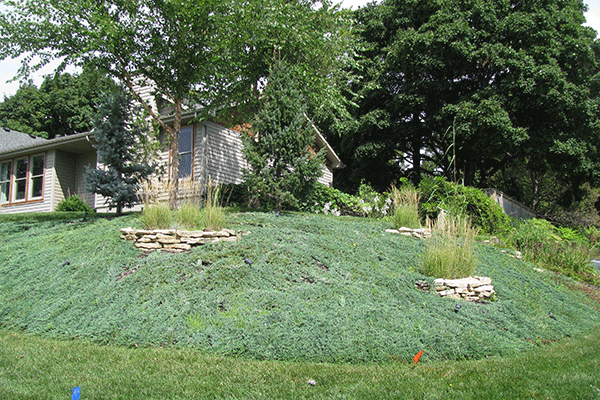 Plumbago, Ceratostigma plumbaginoides. Photo by John Fech, Nebraska Extension.
Plumbago, Ceratostigma plumbaginoides. Photo by John Fech, Nebraska Extension.Groundcovers are low-growing plants, usually less than 12 inches tall, that spread to form dense mats which act to hold soil on hillsides. Many species are quite appealing, producing attractive shoots and flowers. Turfgrasses are the most common groundcovers, however, sites that are less suitable for turf, such as slopes, steep banks and shaded areas are good sites for groundcovers.
 Spotted dead nettle, Lamium maculatum. Photo by John Fech, Nebraska Extension.
Spotted dead nettle, Lamium maculatum. Photo by John Fech, Nebraska Extension.A well-established groundcover generally requires less maintenance than the typical turfgrass lawn, especially if it is poorly sited. Groundcovers are not totally maintenance-free, however, nor will they always tolerate conditions that will not support turf. Groundcovers are best planted in late April or May, late August and September.
 Wintercreeper, Euonymous fortunei. Photo by John Fech, Nebraska Extension.
Wintercreeper, Euonymous fortunei. Photo by John Fech, Nebraska Extension.The number of plants needed depends on the spacing of the individual plants, their rate of growth and how fast you want the space to fill in. When planting, install them in loosened, compost enriched soil, lightly firming the roots to ensure good soil to root contact. Watering small sections of plants will prevent the roots from drying out. Staggered rows of plants usually help to encourage establishment and discourage erosion.
As with many other landscape plants, consider the groundcover’s height, spread, blooming period, seasonal foliage color, texture, drought tolerance, shade tolerance and winter characteristics. Many choices are available from online sources; when perusing, be sure to investigate the hardiness zone associated with a particular species. When shopping at local garden centers, a good first selection criteria is to direct your attention to either the “shady groundcovers” or the “sunny groundcovers”.

